London, by and large, has a mild climate. The weather is what the British call, with euphemistic understatement, “changeable”. Most of us wouldn’t have it any other way, and we love our four distinct seasons and the absence of dramatic happenings.
So the current cold spell is a topic of conversation. With temperatures plunging below zero (Celsius) and a very frosty chill factor, this is as near as we get to extreme. Throughout the UK, temperatures have dropped this week, and Braemar, in Scotland, recorded -23 Celsius, the coldest reading in 25 years. Here in milder London, we’ve even had a dusting of snow, something that doesn’t happen every year, probably because of a big city’s natural warming effect.
According to reports, even the River Thames has frozen in places, but certainly not in the dramatic way it did in the 16th and 17th centuries when markets and fairs could be supported on the ice. Instead, though, we’ve had some severe high tides to contend with.
All this freezing mullarkey doesn’t seem to put off the green parakeets, though. Only yesterday I was watching the flurries of snow from the Macfilos desk when this Pretty Polly landed on the tree outside my office window. Parakeets have infested London and the Thames Valley over the past thirty years.
Feral Polly
These feral birds may look pretty, but they take no prisoners. They breed rapidly, and it is all the odder that they are said to be the descendants of one or two escaped pets, the Adam the Pretty Boy and Eve the Pretty Polly. However, some blame Jimmy Hendrix or Katherine Hepburn and the African Queen for the pollies’ initial introduction.
The cold snap has coincided with a plague of super-high tides on the Thames here in West London. Yesterday the flood tide reached a height of 7.1m, enough to trickle on to some local roads, especially on Chiswick Mall which gets a regular bath throughout the year. Though, none of this is a patch on what would happen if we didn’t have the Thames Barrier to keep down the levels. It has been said that, without the barrier which was opened in 1982, some sections of the Underground railway could be in danger of flooding.
I braved the elements, Leica Q2 in hand, so check out our very own bit of extreme weather. However, I’m aware that by world standards this is very small beer. Might as well enjoy it because next week we’ll be back up to 12 or 15 degrees C.
Riding high
Modest flooding is a commonplace event on parts of the riverbank that are not protected with embankments, but some streets are always vulnerable, as I found out…
Click to enlarge
Becky’s Wellingtons
A curiosity of this stretch of the Thames is the very desirable Chiswick Mall which suffers regular flooding without complaint from the well-heeled inhabitants. Considering the inflated value of these properties, ranging from a million or two to near 20 million pounds, the owners seem to grin and bear it.
This is the erstwhile heart of the old Chiswick fishing village, now preserved in aspic since the hoi polloi decamped a couple of hundred years ago after Thames pollution put paid to their livelihood. They moved a mile or so inland to develop the village of Turnham Green, which is now better known as Chiswick. Instead of fish, they found richer pickings from travellers on the Great West Road out of London.
Chiswick Mall remains one of the gems of West London. It was the home of Miss Pinkerton’s Academy featured in Thackeray’s novel, Vanity Fair. But in those days the flooding must have been a much more significant threat. Becky Sharp, Miss P’s wayward pupil, probably possessed a pair of those new-fangled Wellingtons.
Even today, the expensive houses on Chiswick Mall have extensive flood protection, up to some five feet above road level. But, thanks to the Thames Barrier, it never gets that high these days. Just enough to wet the wheels of the Rolls Royce…
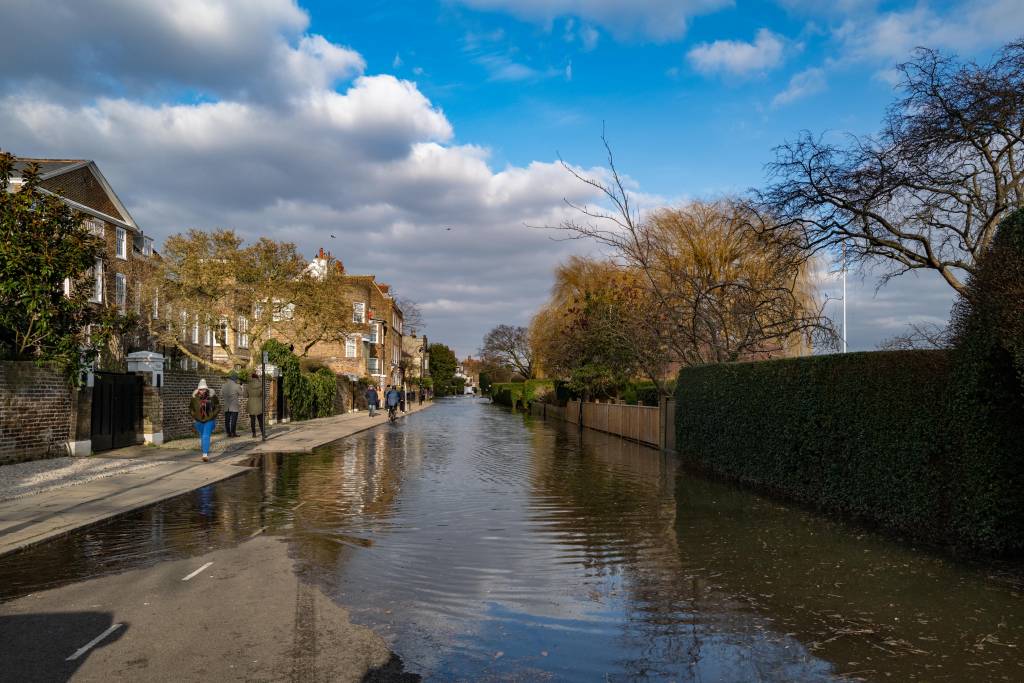

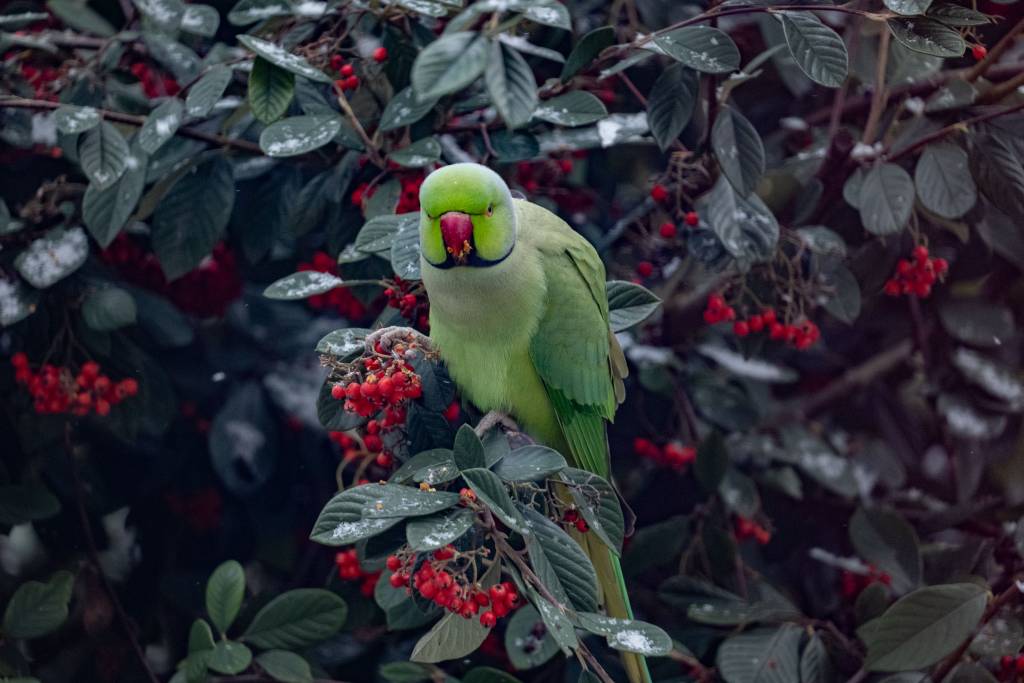
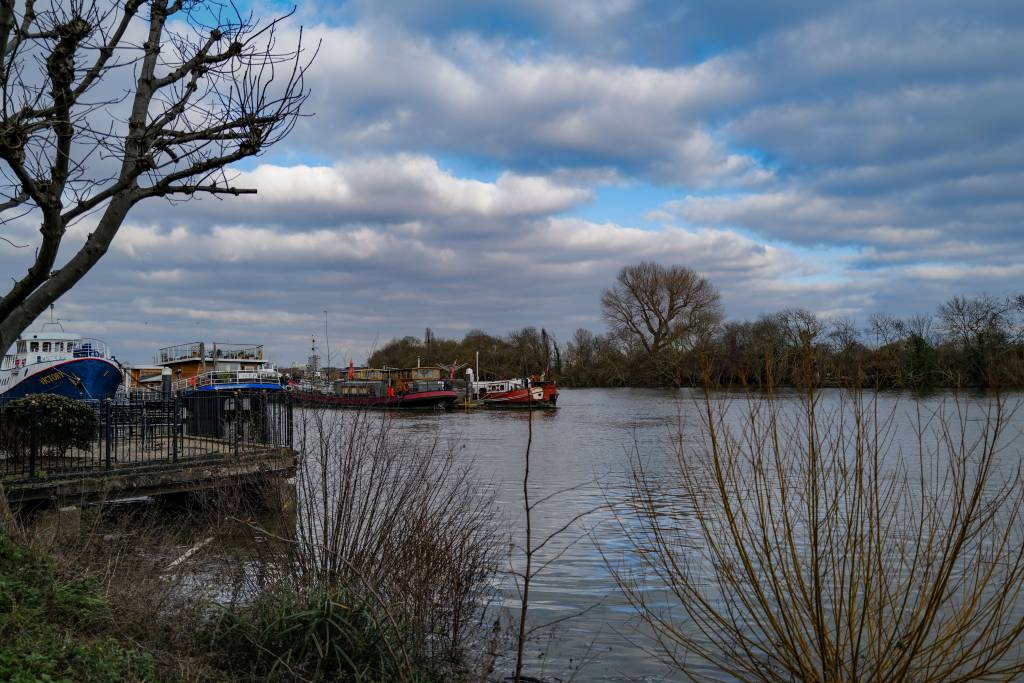
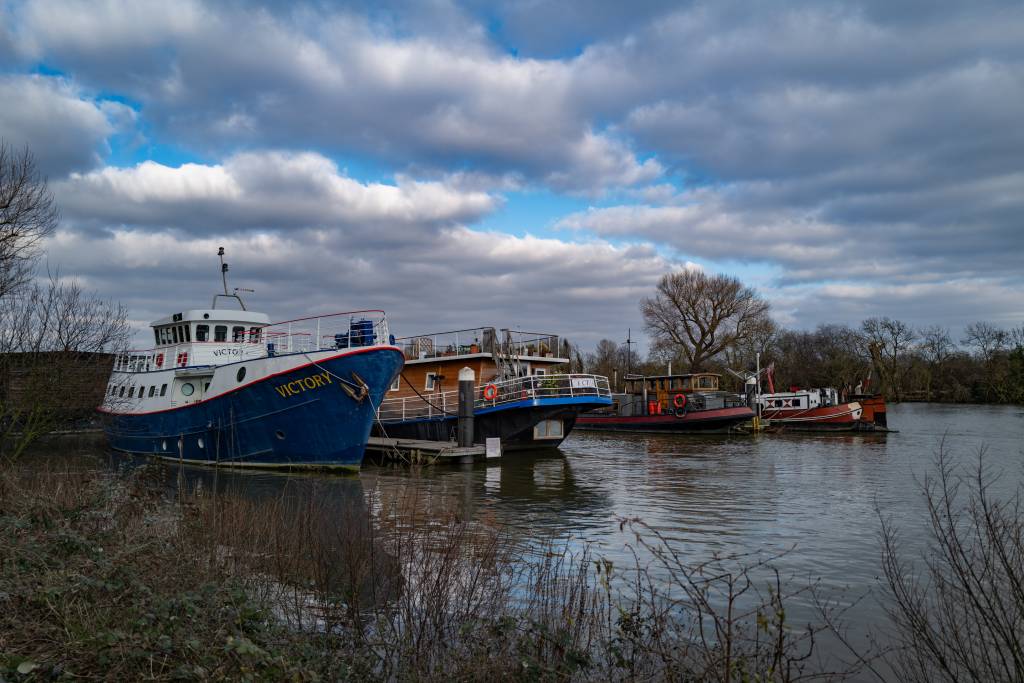
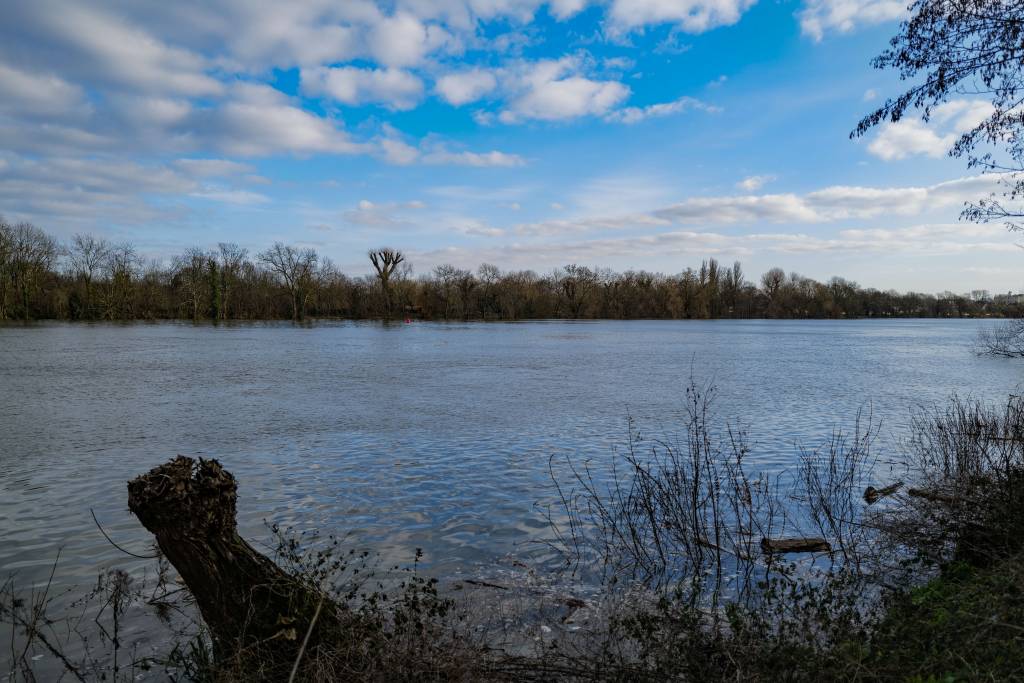
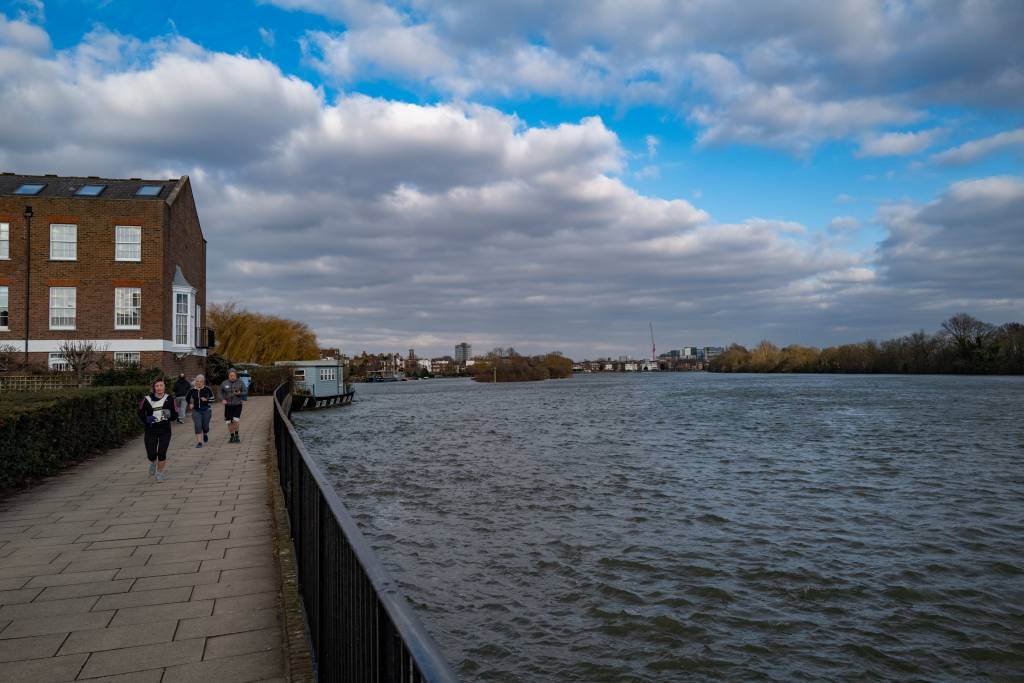
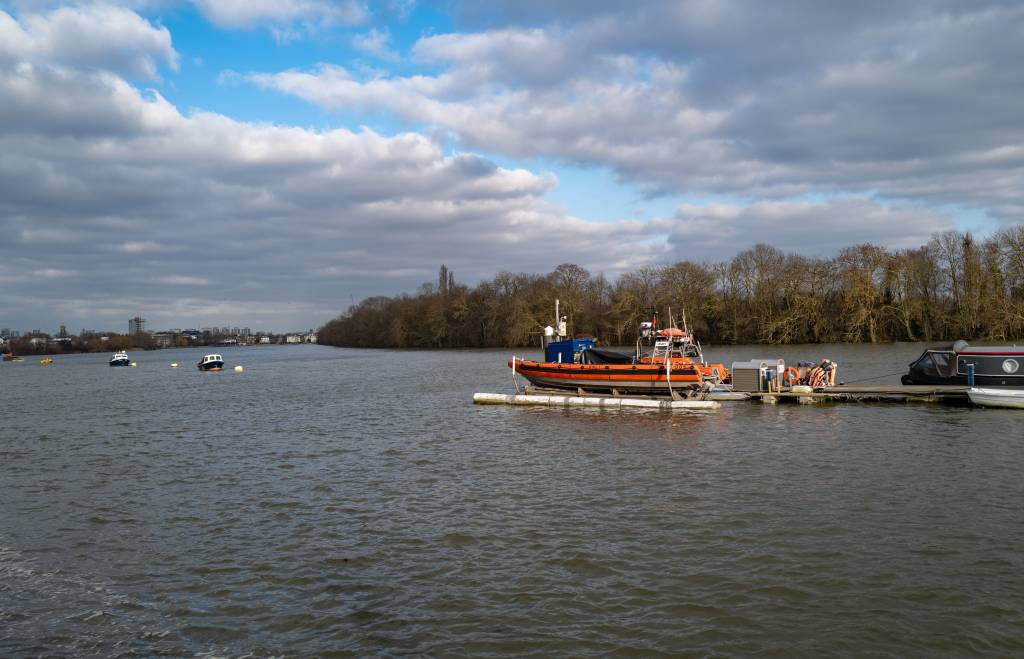
I believe there were sightings of the parakeets as far back as the 1890’s with breeding pairs recorded in Epping Forest in the 1930’s
Thanks, David. I didn’t know that.It does seem that they were and are prolific breeders. In a few years’ time they will have completely taken over the Thames Valley and, probably, spread even further north.
Hi Mike, We’ve been mostly confined to quarters for the better part of a week here in the state of Minnesota.
Low temps -15F (-26C) with highs not making it over the zero mark until today. Wind chill factor was at -45F (-42C). Exposed skin freezes after 10 minutes. No fun whatsoever. We like to say it builds character and keeps the riffraff out. Truth is it’s a pain in the behind. Uff-da!
Bit of information from learning the hard way years ago….if your water pipes are on an outside wall, and not heavily insulated, they can burst. Preventative tip for avoiding it is to use a hairdryer to keep the pipes thawed.
Bundle up, stay warm, and carry your camera in your armpit, underneath your winter coat!
— Linda Lewis
Thanks Linda. I well remember two days I spent in Minneapolis many years ago when handling some business for the British arm of 3M. It was so bad I couldn’t leave the hotel.
But never fear, our cold(ish) snap last weekend was a blip. On Monday we woke to more reasonable temperatures or plus 11 Celsius. All back to normal now and no need for the hairdryer. In any cases, most houses keep their water pipes inside.
Hope you warm up soon. Mike
I still like the little message on a sign outside a B&B in the UP a few years ago that read “There’s no such thing as bad weather, just bad clothing choices.” Us Midwesterners (I claim my badge after 25 years living here) revel in the extreme cold and our ability to thrive in it.
London and the great parks like Richmond look beautiful covered in snow. I just wish I could be there to see it.
This morning I saw a wonderful picture of the Acropolis in Athens covered with snow. It somehow looked even more impressive with all the white. Pity we can’t travel anywhere at the moment!
Nice shot of the parakeet. I don’t believe it is an Australian native bird, so not sure where it came from. Didn’t realise you had the Sigma 100-400mm lens. It’s not yet in the shops here in Western Australia but interested in your views on it, as it’s a damn sight cheaper than the Leica 90-280.
I presume these parakeets must have escaped from a zoo some 30 years ago. We got occasional sightings back then, but now they are becoming quite dominant. It’s strange to see how they have adapted to a colder climate than they must have been used to as a species, but I suppose the temperate conditions in London and the Thames Valley must be part of the story.
The Sigma 100-400 arrived in mid-2020 and I have had no opportunity to try it out. It just happened to be on the S5 on the day in question and it did the trick. I hope to be able to put the lens through its paces when the lockdown is lifted. I have very little use for such a long lens and I certainly couldn’t justify buying the Leica. For the price, it’s ok to keep for the odd occasions when I need the reach.
Another lens I really need to put through its paces is the Panasonic 20-60 which has the makings of an excellent walkaround lens for the S5 or SL2. It actually makes the SL2 feel quite light, and my first impressions are that it is tremendous value for money. My friend Don Morley thinks it is a great lens and has been tremendously impressed, especially at the price.
Quick Google search suggests it is a ring necked parakeet, and it’s a male (females don’t have the black ring around the neck). Originally a native of India and sub-Saharan Africa. Wikipedia notes there are large feral populations around London.
Thanks for the update, Tom. Interesting background.
Truly like the Polly shot. Her eating your berries should make you a member of the RSPB.
Surely you mean “them eating your berries”. We can’t assume anything these days and wouldn’t want to upset them. Or maybe you are on solid ground and can tell Polly from Paul Parakeet?
Nice informal portrait. Polly has serious attitude.
I’d suggest that Polly wouldn’t have flown away in fright if you had opened the window. It looks as though Polly is actually trying to psyche you into opening the window, then like a shot it would have been inside into the warmth.
Hitchcock would have loved it.
You could be right, Wayne. I didn’t want to take the risk.
So did Polly get the cracker? Sorry couldn’t resist.
Your photo of the “feral polly” (lovely phrase!) was the day’s treat, Mike. I enjoyed your crisp pictures of the river (especially those that would load and let themselves be seen screen size). But just you wait: that Thames barrier will breakdown one day, and then there will be photo opportunities galore!
Thanks, John. I have my wellingtons (and waterproof camera) at the ready!
.
We have those green parakeets in our garden, too, but they always settle high, at the tops of the trees, and never interfere with the lower pickings which the other birds choose, and never come down onto the grass itself ..unlike the blackbirds, magpies, sparrows and occasional jay, and so on.. so they seem to all get along without affecting each other, or so it seems to me.
The front of the house was once absolutely covered in a flock(?) of parakeets, which crammed into every crevice ..but just for five minutes, and then they all flew off again.
The high tides are a delight – for me, anyway: Petersham Meadows – in front of us – gets flooded, but only when it’s an exceptionally high ‘spring’ tide (..that’s at new moon and full moon, when the sun and moon line up together..) and pools remain on the meadow even when the tide’s drained back into the Thames. (It’s twinned here with the James River at Richmond, Virginia, USA.)
The houses down by the river between Richmond Bridge and the Richmond railway bridge aren’t allowed to have a wall at the bottom of the gardens but only a fence, as the gardens there are considered to be part of the town’s ‘flood plain’, onto which the high tides spread during the highest ‘springs’.
Donald Pleasence (Ernst Stavro Blofeld, if I remember aright) and family had a (small) house on Strand-on-the-Green, just near Kew railway bridge, and they – like the other householders – had a tall, stout wooden board to slot in front of their front door (they normally used their side door) to keep out the Thames at spring tides! ..You probably know Strand-on-the-Green, Mike ..just a mile or so upstream of you.
If one chooses one’s tide judiciously – taking a spring – one can come up from Greenwich, with the flood tide, through Tower Bridge and the rest of the London bridges, through Putney, past Chiswick, and Richmond – through the open half-tide Richmond weir or lock – and all the way upstream to Teddington (‘tide-end town’) with the tide carrying and pushing you all the way ..and then at Teddington you join the non-tidal Thames through one of the locks ..which is where the river froze this week.
The ‘frost fairs’ on the Thames ended when Mr (later Sir Joseph) Bazalgette built the Thames Embankments, reclaiming land from the Thames’ “strands” – shallow beaches – (not to mention creating London’s enormous sewage system) thereby forcing a faster flow down the river ..too fast to freeze.
I used to live in a boat or two on the river, at Kingston, Ham, and then down at Docklands much further downstream, and loved to have the swans come knocking on the side of the boat and ‘clearing their throats’ (“huh-chmmm”) asking for bread and biscuits.
It was certainly cold on the river in winter, but not as cold as on the frozen land alongside!
David, I’m grateful for all this additional information. It’s difficult to know what to put into a short article, so your extra info is welcome. I do know Strand-on-the-Green, of course, and often walk that way to access Kew Bridge and Kew Gardens. Alternatively, it’s over Chiswick Bridge and along the towpath to Kew. Those slotted boards are also to be seen in Chiswick Mall. At some stage, probably well before 1982, most of the householders had installed industrial-scale flood prevention. On their garden walls, they have 24in-high glass screens which indicate the extent to which the river flooded before the Thames Barrier. It must have been a daily nightmare.
Thanks also for mentioning Bazalgette. That’s a whole new story and one that I might tackle one day. That and John Snow’s (no relation to Game of Thrones Snow) discovery of the source of cholera in that Soho water pump, and also the Great Stink. All reasons for Joe B to construct his sewerage system. All fascinating stuff, but it might be a bit too intense for Macfilos readers unless I can get some good pictures to illustrate it!
(In an odd reverse-quirk(?), one of my jobs – of many hundreds! – was once, with a friend, driving-in metal sheet piling (‘camp shedding’) at the foot of the garden of one of Bazalgette’s great-grandchildren who lived on the Thames at Trowlock Island, just upstream of Teddington lock on the non-tidal Thames ..and his garden was slowly collapsing into the water.
So – as Bazalgette himself had done a century or two before – we shored up and back-filled the earth to secure it against falling in the river.
The trick was to drive-in each of the interlocking steel piles at an angle, so that they locked tighter together the deeper they were driven (we had a compressor on a punt, driving a – rather noisy! – air-hammer to knock each steel sheet nine(?) feet into the river-bed.
But being a Bazalgette, you’d have thought he’d be the perfect person to pile-drive the bottom of his own garden!)